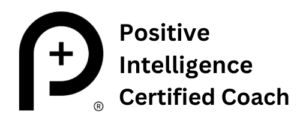 “Dear Ms. Brettschneider: Your mammogram performed on February 10, 2009 is considered incomplete. In order to complete the evaluation, we need additional imaging studies.”
“Dear Ms. Brettschneider: Your mammogram performed on February 10, 2009 is considered incomplete. In order to complete the evaluation, we need additional imaging studies.”
I read those lines and didn’t think twice about it. I had had mammograms dutifully over the years and there had never been an issue. My mother’s sister was a breast cancer survivor, but I had been told that didn’t count as a risk factor.
I assured my husband Mark there was nothing to worry about. “Breast tissue changes as you get older, and the technician told me that the new digital technology results in a lot more call-backs,” I said. I wasn’t in the least bit concerned.
At the follow-up appointment the technician said, “We’re going to take a couple of pictures of your left breast. The radiologist saw something in the first read that she wants to take a closer look at. These images will be much more magnified.”
“Well, I’m glad my breasts will finally look bigger to someone,” I retorted, “because I’m not willing to get implants! Why do people do that?” She laughed.
After the new images were taken, the radiologist met me in a private room to explain that I had three calcification clusters in my left breast. I still wasn’t worried. I was just shy of my 45th birthday, and figured that “calcifications” at this stage of my life weren’t uncommon. It slowly dawned on me, though, that she was talking about various biopsy methods.
“Excuse me,” I interrupted. “Can we back up a little? How normal is this? Should I be worried?”
“I’m concerned about one of the clusters,” she said, looking me straight in the eye. “It looks different from the others. The calcifications are different sizes and shapes. I’m not worried about the other two, but I want to test them while we’re at it.”
I was shocked. It hadn’t occurred to me to bring Mark to this appointment, I was so sure that it wouldn’t turn up anything. My head was spinning. My body went numb. Through the haze I heard her say that if a malignancy did turn up, it would be very early stage.
She recommended a stereotactic core needle biopsy, which removes tissue with a hollow needle. She warned, though, that my small breast size made this method more difficult. The fall-back would be a surgical biopsy, which I assumed would be a straightforward, anesthetized procedure.
I was holding back tears and the doctor rightly sized me up as someone who didn’t want to be hugged by a stranger. I’m not even good at being hugged by family members. I’m not good at being comforted in general. I am always the person who comforts, not the person on the receiving end. She asked if there was anything she could do. I shook my head, she handed me a box of Kleenex and said, “Take as much time as you need.”
I called my husband from the parking lot and gave him the news, still choking back tears. He immediately cleared his schedule to take me to the biopsy appointment, scheduled, appropriately enough, on Friday, March 13th.
I was late meeting a girlfriend for lunch after the longer-than-anticipated appointment. “I have a really good excuse,” I told her. We then drank two glasses of wine each to help me prepare for the journey (this was before I was given the uplifting news that alcohol is linked to breast cancer risk).
Have you or a loved one had to endure a mammogram (or other medical test) call-back? (Trick question, as I know several of you have.) I’d love to hear about your experience in the comments.


